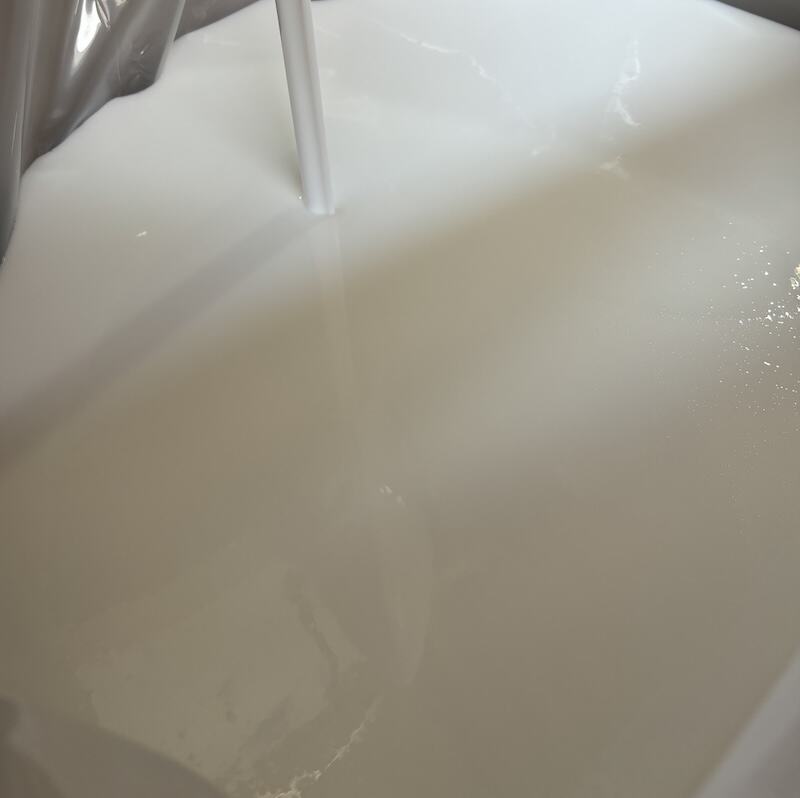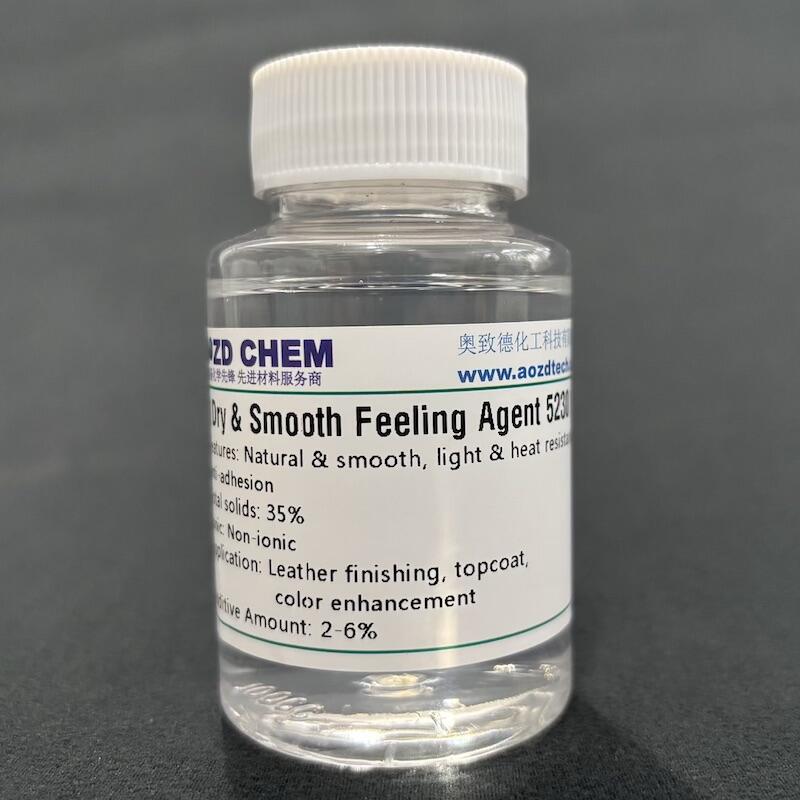Κατανόηση σύγχρονων χημικών λύσεων για ενισχυμένη ανθεκτικότητα δέρματος
Η βιομηχανία δερμάτινων υλικών έχει εξελιχθεί σημαντικά τις τελευταίες δεκαετίες, με τις τεχνολογικές εξελίξεις να εισάγουν καινοτόμα χημικά δερμάτινα που βελτιώνουν σημαντικά την απόδοση των υλικών. Οι σημερινές διεργασίες παραγωγής δερμάτινων υλικών βασίζονται σε μεγάλο βαθμό σε εξειδικευμένες χημικές επεξεργασίες για τη βελτίωση της ανθεκτικότητας, ειδικά όσον αφορά την αντοχή στη φθορά. Αυτά τα ειδικά μείγματα όχι μόνο προστατεύουν την επιφάνεια του δερμάτινου υλικού, αλλά διατηρούν και τη φυσική του ομορφιά και επεκτείνουν σημαντικά τη διάρκεια ζωής του.
Τα σύγχρονα χημικά για δέρματα έχουν επαναστοιχεύσει τον τρόπο με τον οποίο αντιμετωπίζουμε το τελικό στάδιο επεξεργασίας και την προστασία του δέρματος. Από την επένδυση αυτοκινήτων μέχρι εξαρτήματα υψηλής μόδας, αυτές οι χημικές λύσεις διαδραματίζουν καίριο ρόλο στη διασφάλιση ότι τα προϊόντα δέρματος μπορούν να αντέξουν την καθημερινή χρήση και τη φθορά, διατηρώντας παράλληλα την αισθητική τους εμφάνιση. Η επιστήμη πίσω από αυτές τις επεξεργασίες έχει γίνει ολοένα και πιο εξειδικευμένη, προσφέροντας ανεπανάληπτα επίπεδα προστασίας χωρίς να θυσιάζονται τα φυσικά χαρακτηριστικά του δέρματος.
Απαραίτητες Χημικές Επεξεργασίες για Ανωτέρα Προστασία Δερμάτων
Συστήματα Τελικής Επεξεργασίας Βασισμένα σε Πολυουρεθάνη
Οι επεξεργασίες με πολυουρεθάνη αποτελούν μία από τις σημαντικότερες εξελίξεις στα χημικά δερμάτων όσον αφορά την αντοχή στη φθορά. Αυτές οι εξελιγμένες ενώσεις δημιουργούν ένα εύκαμπτο αλλά ανθεκτικό εμπόδιο στην επιφάνεια του δέρματος, προστατεύοντάς το αποτελεσματικά από γρατσουνιές και φθορά. Η μοριακή δομή της πολυουρεθάνης της επιτρέπει να δεσμεύεται στενά με τις ίνες του δέρματος, διατηρώντας παράλληλα την αναπνευστικότητα.
Τα σύγχρονα συστήματα πολυουρεθάνης βασισμένα σε νερό έχουν γίνει ολοένα και πιο δημοφιλή λόγω των περιβαλλοντικών τους πλεονεκτημάτων και των ανωτέρων χαρακτηριστικών απόδοσης. Αυτά τα χημικά δερμάτων παρέχουν εξαιρετική συνοχή και μπορούν να διαμορφωθούν για να επιτύχουν διάφορα επίπεδα λάμψης και αφής, αποτελώντας έτσι ευέλικτες λύσεις για διαφορετικές εφαρμογές.
Παράγοντες Διασύνδεσης και Ρητίνες
Οι παράγοντες διασύνδεσης λειτουργούν σε μοριακό επίπεδο για την ενίσχυση των ινών του δέρματος και τη βελτίωση της αντοχής τους σε φυσικές καταπονήσεις. Αυτά τα χημικά για δέρμα δημιουργούν επιπλέον δεσμούς μεταξύ των αλυσίδων πρωτεϊνών στη δομή του δέρματος, με αποτέλεσμα βελτιωμένες μηχανικές ιδιότητες και μεγαλύτερη ανθεκτικότητα.
Οι προηγμένες τεχνολογίες ρητίνης, όταν συνδυάζονται με κατάλληλους παράγοντες διασύνδεσης, μπορούν σημαντικά να βελτιώσουν την αντοχή του δέρματος σε τριβή και γρατζούνισμα. Η τελευταία γενιά αυτών των χημικών προσφέρει βελτιωμένη ευελιξία και φυσική αίσθηση, διατηρώντας παράλληλα ισχυρή προστασία από αποτριπτικές δυνάμεις.
Προηγμένες τεχνολογίες επιφανειακής μεταχείρισης
Επικαλύψεις Προστασίας με Νανοϋλικά
Η νανοτεχνολογία έχει εισαγάγει επαναστατικές προσεγγίσεις στην προστασία του δέρματος. Τα νανοσωματίδια στα σύγχρονα χημικά για δέρμα μπορούν να διαπερνούν βαθύτερα στη δομή του δέρματος, παρέχοντας ενισχυμένη προστασία από το εσωτερικό. Αυτές οι επεξεργασίες δημιουργούν ένα αόρατο φράγμα που βελτιώνει σημαντικά την αντοχή στη φθορά, διατηρώντας παράλληλα τη φυσική υφή και την αναπνοή του δέρματος.
Η εφαρμογή νανο-βασισμένων προστατευτικών επιστρώσεων περιλαμβάνει ακριβείς μεθόδους διαμόρφωσης και εφαρμογής. Όταν εφαρμόζονται σωστά, αυτές οι επεξεργασίες μπορούν να αυξήσουν την αντοχή του δέρματος στη φθορά κατά πολλαπλάσιες τάξεις μεγέθους, διατηρώντας παράλληλα τα βασικά χαρακτηριστικά του.
Επεξεργασίες Βασισμένες στο Πυρίτιο
Τα χημικά για δέρματα με βάση το πυρίτιο προσφέρουν μοναδικές ιδιότητες που συμβάλλουν σε ανωτέρα αντοχή στην απόσβεση. Αυτές οι επεξεργασίες δημιουργούν ένα εύκαμπτο, ανθεκτικό φιλμ που προσφύεται στενά στην επιφάνεια του δέρματος, διατηρώντας παράλληλα αρκετή ελαστικότητα ώστε να κινείται μαζί με το υλικό. Το αποτέλεσμα είναι ενισχυμένη προστασία από μηχανικές τάσεις χωρίς να θυσιάζονται οι φυσικές ιδιότητες του δέρματος.
Οι σύγχρονες συνθέσεις βασισμένες σε σιλικόνη μπορούν να προσαρμοστούν για την επίτευξη συγκεκριμένων επιδόσεων, καθιστώντας τις πολύτιμα εργαλεία στην ολοκλήρωση του δέρματος. Συχνά, αυτές οι επεξεργασίες προσφέρουν επιπλέον πλεονεκτήματα, όπως αντίσταση στο νερό και βελτιωμένη αφή.

Περιβαλλοντικές Πτυχές στις Χημικές Επεξεργασίες
Φιλικές προς το Περιβάλλον Συνταγές
Η βιομηχανία του δέρματος έχει σημειώσει σημαντική πρόοδο στην ανάπτυξη χημικών λύσεων φιλικών προς το περιβάλλον. Τα χημικά δέρματος με βάση το νερό έχουν αντικαταστήσει κατά μεγάλο μέρος τις εναλλακτικές λύσεις με διαλύτες, μειώνοντας την περιβαλλοντική επίπτωση ενώ διατηρούν υψηλά πρότυπα απόδοσης. Αυτές οι φιλικές προς το περιβάλλον συνθέσεις πληρούν αυστηρές ρυθμιστικές απαιτήσεις, παρέχοντας ταυτόχρονα εξαιρετική αντοχή στη φθορά.
Οι πρωτοβουλίες για την πράσινη χημεία οδήγησαν στην ανάπτυξη βιοαποικοδομήσιμων εναλλακτικών λύσεων που προσφέρουν συγκρίσιμα επίπεδα προστασίας. Αυτές οι καινοτόμες λύσεις δείχνουν ότι η περιβαλλοντική υπευθυνότητα και η βελτίωση της απόδοσης μπορούν να συνυπάρχουν.
Βιώσιμες Μέθοδοι Επεξεργασίας
Η σύγχρονη επεξεργασία δέρματος τονίζει βιώσιμες πρακτικές στην εφαρμογή χημικών. Οι προηγμένες τεχνολογίες εφαρμογής ελαχιστοποιούν τα χημικά απόβλητα ενώ βελτιστοποιούν την αποτελεσματικότητα των επεξεργασιών. Αυτή η προσέγγιση όχι μόνο μειώνει την περιβαλλοντική επίπτωση, αλλά βελτιώνει και την οικονομική αποδοτικότητα της παραγωγής δέρματος.
Οι βιώσιμες μέθοδοι επεξεργασίας συχνά περιλαμβάνουν συστήματα ανακύκλωσης και ανάκτησης χημικών ουσιών για το δέρμα, μειώνοντας περαιτέρω το περιβαλλοντικό τους αποτύπωμα. Αυτές οι πρακτικές αποτελούν ένδειξη της δέσμευσης της βιομηχανίας για υπεύθυνη παραγωγή, διατηρώντας ταυτόχρονα υψηλά πρότυπα ποιότητας.
Συχνές Ερωτήσεις
Πόσο διαρκούν συνήθως οι χημικές επεξεργασίες για την αντοχή στη φθορά;
Η ανθεκτικότητα των χημικών επεξεργασιών εξαρτάται από διάφορους παράγοντες, όπως ο τύπος των χρησιμοποιούμενων χημικών, η μέθοδος εφαρμογής και οι συνθήκες χρήσης. Οι υψηλής ποιότητας επεξεργασίες διατηρούν συνήθως την αποτελεσματικότητά τους για αρκετά χρόνια υπό κανονικές συνθήκες χρήσης, αν και μπορεί να συνιστάται περιοδική συντήρηση για βέλτιστη προστασία.
Είναι ασφαλή τα χημικά για το δέρμα σε άμεση επαφή με το δέρμα;
Οι σύγχρονες χημικές ουσίες για δέρματα υπόκεινται σε αυστηρές δοκιμές ασφάλειας και πρέπει να συμμορφώνονται με τους επιβαρυντικούς κανονισμούς σχετικά με την επαφή με το δέρμα. Μετά τη σωστή επεξεργασία, αυτές οι επεξεργασίες είναι γενικά ασφαλείς για άμεση επαφή με το δέρμα. Ωστόσο, είναι σημαντικό να συνεργάζεστε με αξιόπιστους προμηθευτές και να ακολουθείτε πιστά τις οδηγίες εφαρμογής.
Μπορούν οι χημικές επεξεργασίες να επηρεάσουν τη φυσική εμφάνιση του δερμάτινου υλικού;
Αν και ορισμένες χημικές επεξεργασίες μπορεί να αλλάξουν ελαφρώς την εμφάνιση του δερμάτινου υλικού, οι προηγμένες συνταγές έχουν σχεδιαστεί για να ενισχύσουν την προστασία διατηρώντας τα φυσικά χαρακτηριστικά του υλικού. Τεχνικές επαγγελματικής εφαρμογής μπορούν να ελαχιστοποιήσουν οποιαδήποτε οπτική επίδραση, ενισχύοντας παράλληλα τα προστατευτικά οφέλη.

